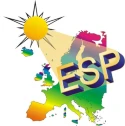
Overview
Photochemical & Photobiological Sciences is an international peer-reviewed journal publishing comprehensive research in the fields of photochemistry and photobiology.
- Official journal of the European Society for Photobiology (ESP) and the European Photochemistry Association (EPA).
- Focuses on the interaction of light with molecules, supramolecular systems, or biological matter.
- Publishes original research papers, reviews, perspectives, communications, and technical notes.
- Contains a forum section for further scientific discussion.
- Published under the Springer imprint since 2021.
This is a transformative journal, you may have access to funding.
- Editor-in-Chief
-
- Dario Bassani,
- Kristjan Plaetzer
- Impact factor
- 3.1 (2022)
- 5 year impact factor
- 3.4 (2022)
- Submission to first decision (median)
- 8 days
- Downloads
- 560,828 (2023)
Societies and partnerships

Latest articles
Journal updates
Journal information
- Electronic ISSN
- 1474-9092
- Abstracted and indexed in
-
- Astrophysics Data System (ADS)
- BFI List
- BIOSIS
- Baidu
- Biological Abstracts
- CLOCKSS
- CNKI
- CNPIEC
- Chemical Abstracts Service (CAS)
- Current Contents/Physical, Chemical and Earth Sciences
- Dimensions
- EBSCO
- EI Compendex
- Google Scholar
- Medline
- Naver
- OCLC WorldCat Discovery Service
- Portico
- ProQuest
- Reaxys
- SCImago
- SCOPUS
- Science Citation Index Expanded (SCIE)
- TD Net Discovery Service
- Wanfang
- Copyright information
-
© European Photochemistry Association, European Society for Photobiology








